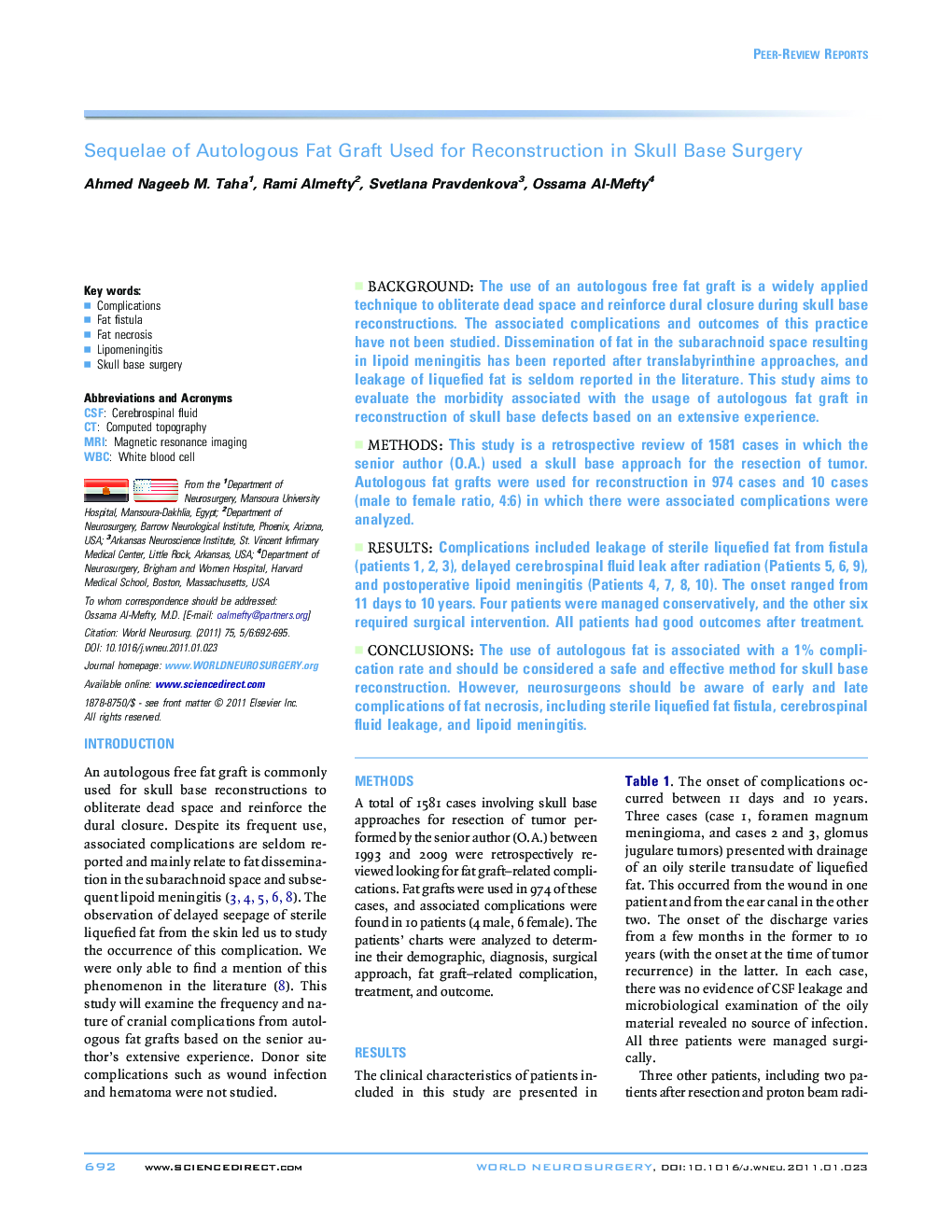| Article ID | Journal | Published Year | Pages | File Type |
|---|---|---|---|---|
| 3097282 | World Neurosurgery | 2011 | 4 Pages |
BackgroundThe use of an autologous free fat graft is a widely applied technique to obliterate dead space and reinforce dural closure during skull base reconstructions. The associated complications and outcomes of this practice have not been studied. Dissemination of fat in the subarachnoid space resulting in lipoid meningitis has been reported after translabyrinthine approaches, and leakage of liquefied fat is seldom reported in the literature. This study aims to evaluate the morbidity associated with the usage of autologous fat graft in reconstruction of skull base defects based on an extensive experience.MethodsThis study is a retrospective review of 1581 cases in which the senior author (O.A.) used a skull base approach for the resection of tumor. Autologous fat grafts were used for reconstruction in 974 cases and 10 cases (male to female ratio, 4:6) in which there were associated complications were analyzed.ResultsComplications included leakage of sterile liquefied fat from fistula (patients 1, 2, 3), delayed cerebrospinal fluid leak after radiation (Patients 5, 6, 9), and postoperative lipoid meningitis (Patients 4, 7, 8, 10). The onset ranged from 11 days to 10 years. Four patients were managed conservatively, and the other six required surgical intervention. All patients had good outcomes after treatment.ConclusionsThe use of autologous fat is associated with a 1% complication rate and should be considered a safe and effective method for skull base reconstruction. However, neurosurgeons should be aware of early and late complications of fat necrosis, including sterile liquefied fat fistula, cerebrospinal fluid leakage, and lipoid meningitis.
